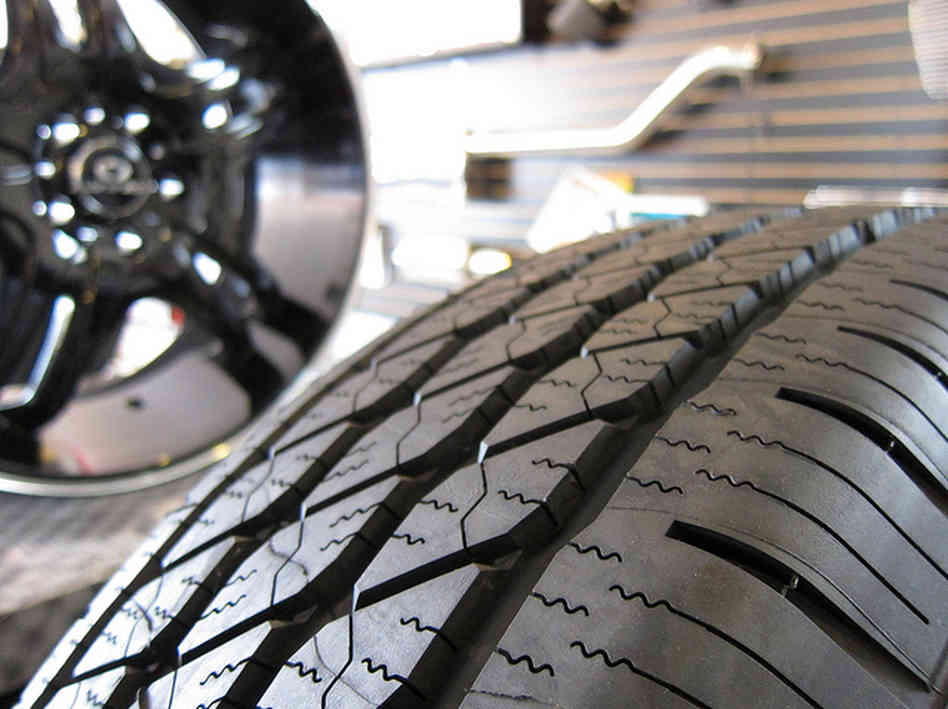
Photo by Josh Kenzer
If you’re interested in tires, the following glossary goes over some tire basics. You’ll know a lot of it already, probably. But there may be a few terms or tidbits that are new to you as well.
Properly maintaining your tires can greatly improve the performance and handling of your vehicle, will give you a smoother ride, better gas mileage, and will save you money over the long haul.
The Tire Glossary
Air Pressure
The amount of air inside the tire, expressed as pounds per square inch. Air pressure should be measured when the tire is cold—meaning before it has been driven on.
All-Season Tires
Tires designed and built to provide reliable traction in all common road conditions, including dry, wet, snow, et cetera. The versatility of all-season tires does lend itself to limited performance in extreme conditions, and certainly compared to purpose-built tires for specific performance categories.
Alphanumeric
A term for describing the size of a tire (215/65R15, for example) using both letters and numbers.
Describes the tire’s height-to-width proportion. Using the previous example, (215/65R15), the number 65 represents the aspect ratio. It means the tire’s sidewall height is 65 percent of its section width.
Balance
Achieved when all four wheels and tires spin with weight distributed evenly. Not balancing wheels can result in tire vibration. A wheel balancer is used to place weights to compensate for static and dynamic imbalances found in all wheel-and-tire assemblies.
Bead
The length of steel wire wrapped and reinforced by steel cords that are built into the tire diameter and run in a complete circle around the tire’s outer diameter to make it strong.
Bias Ply Tire
A bias ply tire is a tire built with criss-crossing plies to give the tire strength. The crossing plies generate heat when in use and ultimately limit the tire’s performance and wear characteristics.
Carcass/Casing
The body of the tire beneath the tread and sidewalls.
Contact Patch
The portion of tread that touches the road while rotating.
Cord
The strands of material that form the tire layers. Cords are often made from steel, fiberglass, polyester, nylon, or rayon.
Footprint
The footprint is the same as the contact patch. It is the portion of tread that touches the road.
The space between two adjacent tread ribs. Sometimes called “tread grooves.”
Heat Cycling
A way to break-in competition tires before using them in racing conditions. Heat cycling heats tires gradually in a controlled manner. It is designed to give drivers more traction and longer tread life.
Highway Tires
Sometimes called summer tires, highway tires are purpose-built for dry and occasionally wet driving conditions, but not for use on ice or snow.
Hydroplaning
The result of tires losing contact with the road in wet driving conditions, like sliding on ice.
Innerliner
The inside layer of a tubeless tire which prevents air from permeating through the tire wall; a replacement for the innertube.
Load Index
The load carrying capacity of a particular tire, designated by a number ranging from 0-279.
Maximum Inflation Pressure
Indicates the maximum air pressure to which a cold tire can be inflated. The maximum pressure is typically listed on the tire’s sidewall.
The diameter of an inflated tire minus any load.
Overall Width
The distance between the tire’s outer sidewalls, including lettering.
P-Metric
Introduced by American tire manufacturers in 1977, P-metric is a uniform designation of tire sizes using metric measurements. A typical example of a P-metric series tire size is P215/70R-15.
Placard
A small label typically found on the edge of the driver’s side door or inside the vehicle glove compartment with information including the vehicle manufacturer’s recommended tire inflation pressure, Gross Vehicle Weight, seating capacity, et cetera.
Plus-Sizing
The act of customizing your vehicle appearance by mounting lower-profile tires on larger-diameter wheels. Using a lower-profile tire with a larger wheel proportionally, allows the overall diameter to remain about the same.
Ply
A rubber-coated layer of cords that run throughout tires. They exist between the inner liner and tread belts. They extend from bead to bead.
Ply Rating
A way to express the load-carrying capacity of tires in terms of the number of plies. However, the number doesn’t necessarily correspond with the specific number of plies. For example, a 6-ply rating is expressed as Load Range C. And it doesn’t have six individual plies. It has one or two plies equivalent to the strength of six plies. Tires run cooler and last longer as a result of this design.
PSI
Otherwise known as Pounds Per Square Inch. This is the standard unit of measurement for your tire air pressure.
Ride Matching
A method of balancing wheel-and-tire assemblies using simulated road tests. Ride matching will give you the optimum weight distribution and prevent tire vibration caused by a series of small imbalances.
Rim/Wheel Width
The distance between the two opposite inside edges of a rim/wheel.
Rolling Resistance
The amount of force required to keep tires moving at a constant speed. As rolling resistance lessens, so does the amount of energy needed to keep it rotating.
The act of transferring tires from front to back or side to side on your vehicle so that all of your tires wear at the same, uniform rate. It is generally recommended that you rotate tires every 5,000-6,000 miles.
Section Height
The height of a tire as measured from the outer tread to the wheel edge.
Section Width
The distance between your tires’ outside sidewalls, not including any raised lettering.
Shimmy
The result of wobbling wheels from side to side when the vehicle is in motion. Shimmying is caused by misaligned or bent wheels, or imbalanced tires.
Shoulder
The spot on your tire where the tread meets the sidewall. Some tires feature shoulder blocks for improved traction and performance in certain applications.
Sidewall
The part of your tire between the bead and the tread.
Size
The size of a tire is defined by its height, width, wheel diameter, aspect ratio, and construction.
Snow Tire
Sometimes called winter tires, snow tires are built with compounds and with tread designs that provide improved traction in snowy driving conditions. All-season tires also incorporate some of the same design features.
Speed Rating
Tire speed ratings are determined via laboratory test that simulate performance at various speeds. The speed ratings of tires are based on U.S. government standards for accelerating to, and sustaining, certain speeds. Tires with higher speed ratings will generally give you better handling.
Tire Pressure Monitoring System (TPMS)
An automated system of computer sensors that monitor the air pressure in your vehicle’s tires. TPMS sensors are typically triggered when one or more of the tires drops 25 percent or more below the recommended tire pressure.
Tread
Distinguished by the varying design of ribs and grooves, the tire tread is the part of the tire that comes in contact with the road or driving surface.
The distance between the top of the tire and the base of the tread groove nearest the tire’s centerline. Most states consider a tire to be worn out when its tread depth reaches 2/32 inch.
Treadwear Indicator
Narrow bands—otherwise known as wear bars—that appear on the tread when the tread depth is worn to 2/32 inch.
Tread Width
The width of your tire’s tread.
Valve
The device that allows air in and out of your tires. Tire valves prevent air from escaping your tires, and valve caps exist to prevent dirt and moisture from building up in your tire valves.

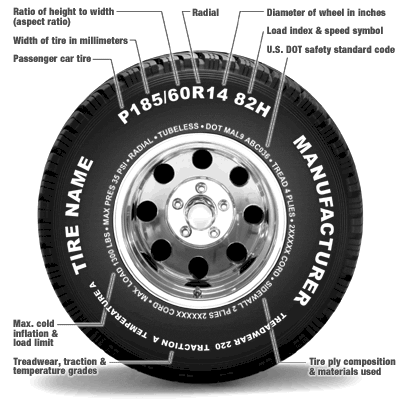
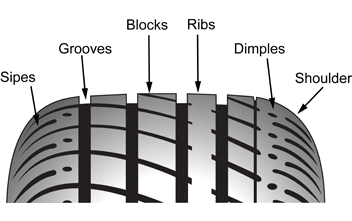
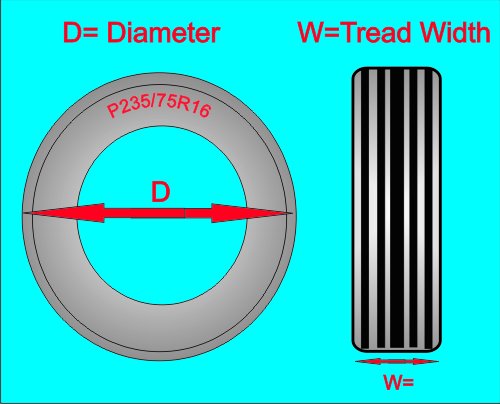
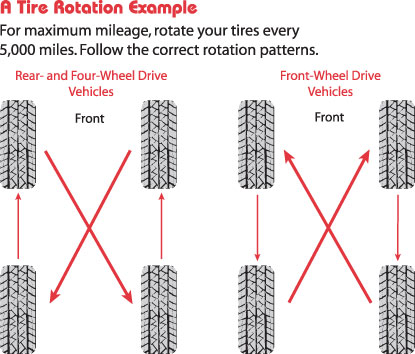
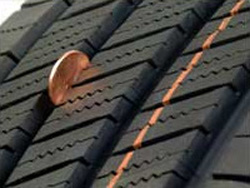
[…] See also: Camshaft Glossary and Tire Glossary. […]
What is meant by “reinforced” tires? This was/is recommended for my ‘91 VW Vanagen. Is this an obsolete term? What would be the modern equivalent?
[…] Download Image More @ http://www.onallcylinders.com […]
ROTATION
Many drivers now (and have been for a while now) are also using tires with Directional Tread. It needs to be noted for those “Not Knowing” what this is…..that they need to be installed in the correct direction and rotated ONLY on the same side of the vehicle after tires are mounted on the rims and installed.
You bring up a good point–and it doesn’t just concern tire tread either. We’ve seen quite a few situations where the rims/wheels themselves are directional (C4 Corvettes come to mind), often due to the vanes (spokes) of the wheel offering supplemental brake cooling capability. In those instances, you should make sure your tires are fitted to the wheels so they’re both in the proper direction, then ensure that they’re bolted to the car that way too.
My experience over the last 50 years of driving and working on vehicles: cross rotating radial tires has resulted in shifting belts and/or blow out. Tire make, passenger or truck tire, made no difference. Every time mine changed direction of rotation, belts shifted, sometimes quite suddenly and violently on the highway.
The one thing I didn’t see in the article pertains to tire age ,,,this could be of use to someone purchasing a car or trailer that may have been setting for some time
You’re exactly right Mark–good catch. We’ve written two articles that go into detail on how to date your tires:
Mailbag: Determining Tire Age by Serial Number
Tire Decoder: How to Translate Your Tires’ Sidewalls
Your article conflicts with what I’ve always heard in two areas: The word ‘diameter’ refers to the center hole in the tire and identifies the size wheel that should be used.
The tires that are powered, (the fronts for FWD and the rears for RWD) are the ones that should change sides of the vehicle when rotating. Exactly opposite from what your diagrams illustrate. I never knew the reason, and it may just be preference.
I’m not criticizing. Just pointing out how your article differs from what I’ve experienced in my driving career.
Respectfully,
Bob
I find it funny that there is not even a mention of date of manufacture in this article
Stale tires are being sold as new and people have no idea
Tires all have date of manufacture listed on the sidewall
Hey Anthony, thanks for reading–I made a similar reply above, but we’ve got a pair of standalone articles dedicated to that, if it helps:
Mailbag: Determining Tire Age by Serial Number
Tire Decoder: How to Translate Your Tires’ Sidewalls
Consider including All Weather (All Year) tires in your definitions / Thx / DM